In playing the one intro game of Dracula’s America, there was one little thing bothering me. To activate, both players play a playing card from a draw of cards that reset at the top of each round. A lot of games use cards, and specifically standard playing cards, to determine an activation order but I’ve seen a few new iterations that I’ve been enjoying. Unfortunately, Dracula’s America uses a very simple mechanic. While this isn’t bad, I think there is a big missed opportunity here.
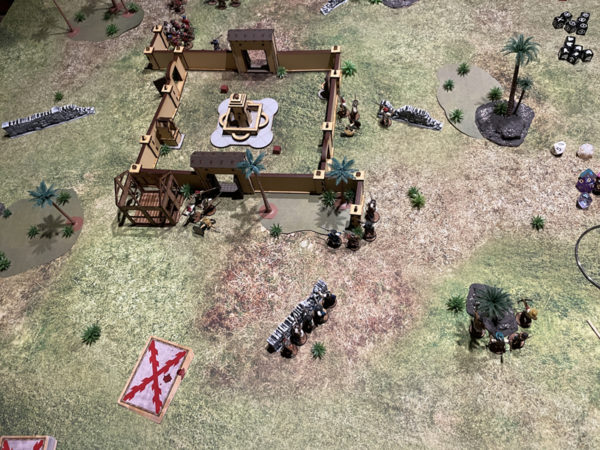
Dracula’s America does a simple “high card” (aces high) resolution with black suit cards beating red suit cards. A two of clubs beats an ace of hearts. In practice, this seemed to amount to little more than random high card. You could do this with dice and have little impact feel to the game. The only kicker is that you have a hand of cards and you play them throughout the round so you could decide to try to not go first in a particular activation and play low, giving you more agency than you have with standard dice rolls. During the game, there wasn’t enough reason to ever purposely go last so the choice seemed there for the sake of having choice.

Designers have started messing with the options surrounding activation and putting more balance and trade off to it. I’m sure the idea isn’t new but I’ve been seeing it crop up more and more and I like where things are going. In the above Blood & Plunder example, the game use a playing card deck with some custom reminder rules. The rules are the same for each suit so you could use a reference sheet or memorize them and use a standard playing card deck.
The interesting thing Blood & Plunder adds is an element of weight to the card playing decision. Each suit is now ranked in normal poker hierarchy, Spade beats Hearts which beats Diamonds which beats Clubs. Then highest card beats lowest (in B&P, King is high, Ace is low). With this granularity comes a tradeoff, the “faster” the suit, the less actions you get. This immediately makes the decision tree much more interesting. The decision to go first now is tempered with how much do you need to get accomplished when going first and does the activation order outweigh the amount of actions you need to get that goal accomplished.
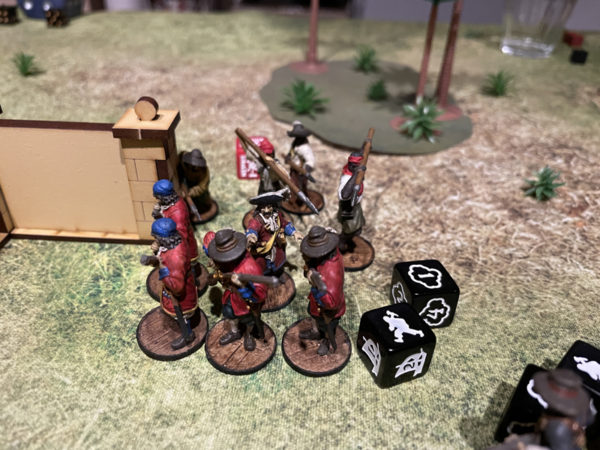
In my few games of Blood & Plunder, the importance of activation order and the pain of losing actions versus going first was a constant presence. It made the game more exciting, it gave reason for using cards over dice and opened up a lot of design space for the game. The game units have degrees of quality, Inexperienced, Trained, and Veteran, and depending on their quality, you could activate more or less with a given card. Specific units also had abilities that tied to the suit you played, giving you even more flexibility and strategy when determining what card to use.
So where am I going with this? Obviously, I’m going to implement this into Dracula’s America. I like the overall game system and want to explore it deeper but don’t want this inferior activation mechanic to weigh it down. The nice thing about the Blood & Plunder system is it can translate to Dracula’s America easily as both game units have quality settings. Dracula’s America uses Novice, Veteran, and Hero and this will work easily.
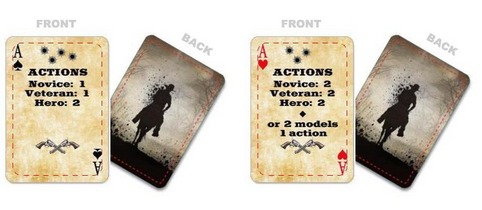
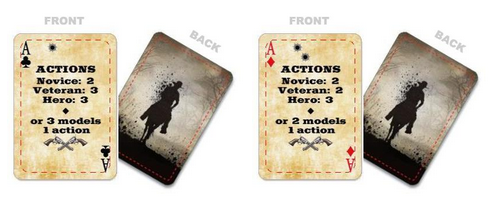
Going back to my roots, loaded up PrinterStudio and did a little graphic design (shamelessly stealing images from the net) to create my own activation deck. I could have used a Blood & Plunder deck but not only did I want something to match the old west theme, Dracula’s America adds in a nice little extra rule during activations that I wanted to capture.
When you activate in Dracula’s America, you choose either one figure and do two actions or two separate figures to do one action each. With this bonus choice, I also had to amend the action progression of the suits to make better sense of the normal gameplay in Dracula’s America. Like Blood & Plunder, I can see amending some powers in the game to trigger specifically off suits as well. For instance, the Gunsmith skill says that the model can re-roll and failed Jamming Check. The power could be amended to the Gunsmith skill to allow the model the re-roll just like the original but also make clearing the jam a free action instead of a move action when playing a Spade card.
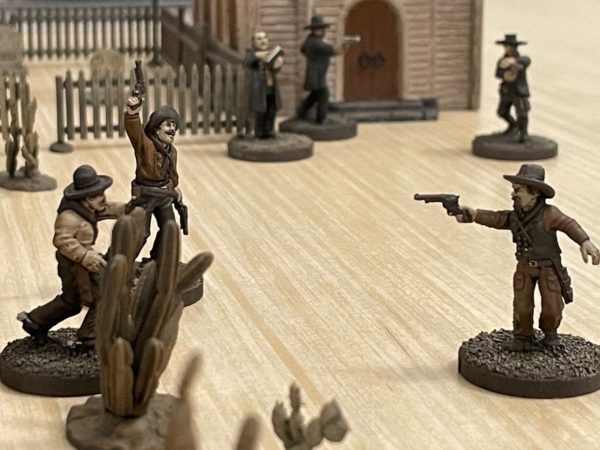
The company is printing the deck as I type and I’ll soon have a couple to try out. Worst case scenario is I can always go back to the standard way to play if need be and have two thematic decks always ready for a game.
